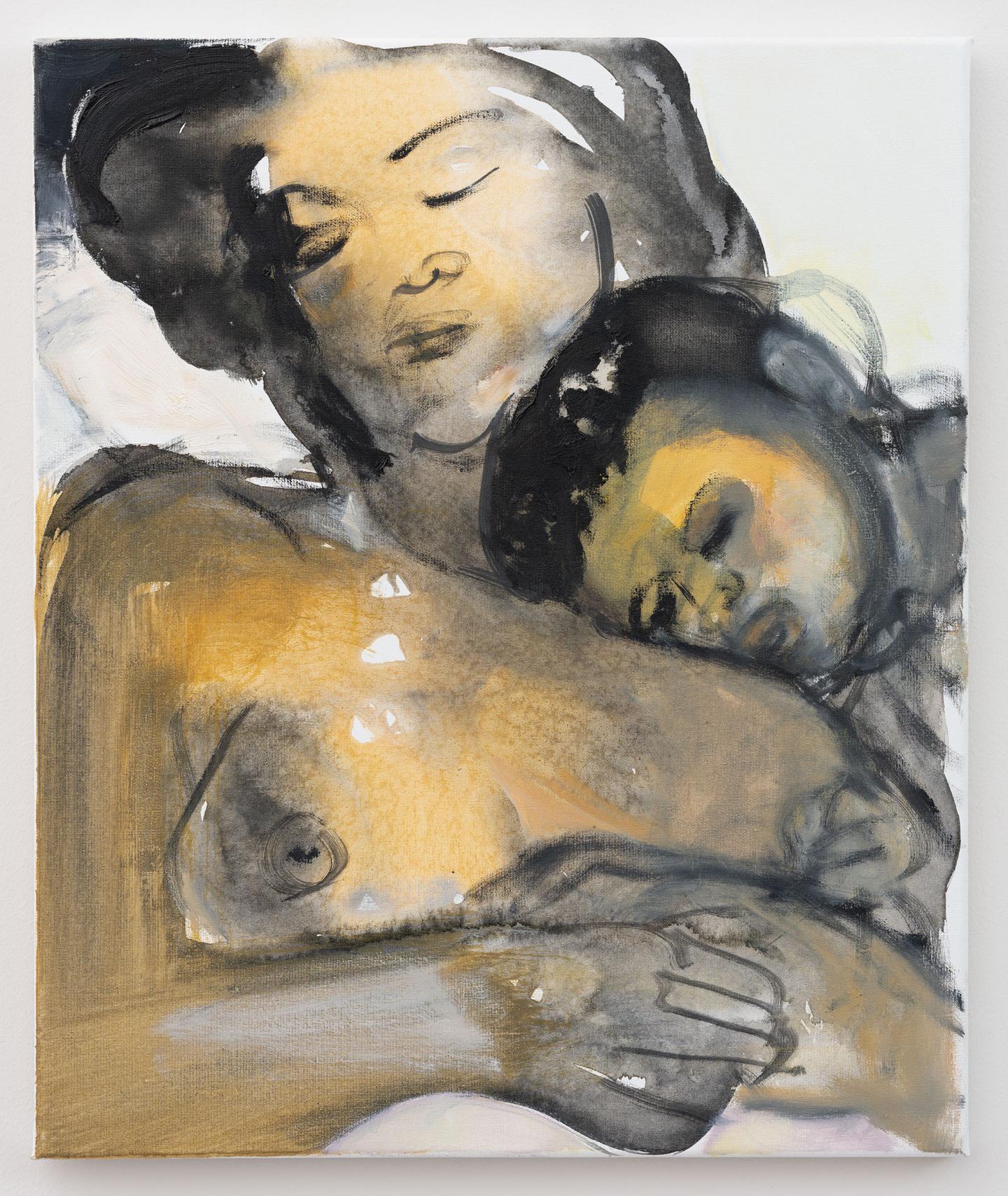Marlene Dumas Paints Vulnerable Yet Strong Women Through History
At Zeno X Gallery, Antwerp, the artist takes a second look at the social and emotional aspects of images
At Zeno X Gallery, Antwerp, the artist takes a second look at the social and emotional aspects of images

For more than 30 years, the Amsterdam-based South African artist Marlene Dumas has pursued the same project: painting humanity. Drawn from media imagery, her own photographs or her imagination, her subjects are frequently unclothed and vulnerable, captured at moments when they are hungry for affection, consumed by sexual desire or violence, or marked by social or racial injustice – all the while remaining utterly engaging. In her works, Dumas makes deliberate use of violence and pornography to draw attention to the human condition in all its diversity.
To mark the 25th anniversary of the artist’s representation by Zeno X, the gallery is showing new works in a solo show titled ‘Double Takes’. The first gallery seems to focus on the history of femininity and brings together the faces of women separated by millennia: the 5,000-year-old Lady of Uruk (2020), probably the world’s oldest surviving portrayal of a woman, the Egyptian queen Nefertiti (2020) and the Dutch dancer Romana Vrede (2019), whose androgyny calls into question the outmoded Western ideals of feminine beauty.

In the following room are portraits of the poet Charles Baudelaire, his Dutch translator Hafid Bouazza, and Baudelaire's Haitian lover, Jeanne Duval, as well as Le Désespoir de la Vieille (The Old Woman’s Despair, 2020) – an emaciated figure dissolving into thin air – which is inspired by Baudelaire’s eponymous poem of 1869. Few poets have created such an extreme collision between the freedom of artistic imagination and morality as Baudelaire: when his collection Les Fleurs du Mal was published in 1857, it caused such a scandal that the poet was prosecuted for ‘insulting public decency’ and his poems were banned. Dumas is not only fascinated by the boldness of Baudelaire’s poetry, but also by the concept of translation – whether linguistically, as in the case of Bouazza, or painterly, as in her own works.
Elsewhere, three works take the form of three-metre-tall canvases that resemble stelae. A naked woman, rendered with course brushstrokes in reddish-black tones, stands in front of a white wall looking at her shadow on the wall. Or is it a spirit, a deity, a chimera? Dumas leaves the question unanswered but titles the piece The Origin of Painting (The Double Room) (2018), hinting at Pliny the Elder’s belief that the art of painting had first been invented by copying the outlines of a shadow on a wall. The other two paintings in this format, Time and Chimera (2020) and The Making of (2020), also depict naked women with shadowy companion figures that evoke a sense of mortality. In the exhibition catalogue, she writes: ‘art is, and has always been, a preparation for death’. While the presence of death in most of Dumas’s recent portraits is quite subtle, it’s more evident in older works such as her well-known painting of Marilyn Monroe’s autopsy photograph (Dead Marilyn, 2008).

The most powerful works here, however, are Dumas’s intimate family portraits. Her heavily pregnant daughter, Helena, proudly presents her protruding belly (Helena Michael, 2020) in a painting that hangs alongside one of her friend, Luana Carretto (2020), who is also pregnant. Further works depict her grandson, Eden, by himself (Eden, 2020), with her son-in-law (Shèrkènt and Eden, 2020) and asleep with his head resting on the shoulder of Dumas’s naked, reclining daughter (Helena and Eden, 2020). This last, intimate painting reflects the same universal mother-child relationship portrayed in statues of antiquity and Christian images of the Madonna and Child. In another text from the catalogue, Dumas, who despite being a passionate painter is still plagued by doubts about the worth of the painted image, asks: ‘Why bother to look at images anyway?’ Because, we might respond, as these works demonstrate, paintings can fill the infinite emotional void with extraordinary empathy.
Translated by Nicholas Grindell
Main Image: Marlene Dumas, ‘Double Takes’, 2020, installation view, Zeno X Gallery, Antwerp. Courtesy: the artist and Zeno X Gallery, Antwerp
























